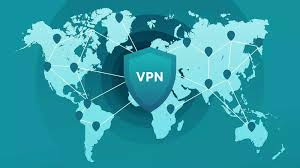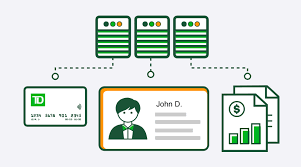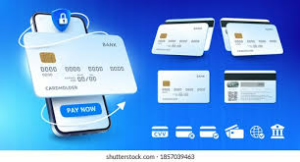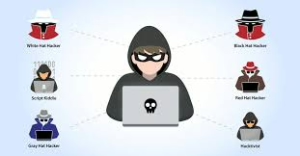Many consumers tend only to consider the importance of cybersecurity once they find themselves facing the unfortunate consequences of an attack. This reality underscores the necessity for banks to integrate robust security measures into their operations seamlessly. Trust is paramount when it comes to consumer decision-making; a recent survey conducted by marketing firm Marigold reveals that nearly half (49%) of consumers prioritise a brand’s reputation over price when making purchasing choices. For financial institutions, trust becomes even more critical as they are tasked with safeguarding their clients’ most sensitive information against the escalating risks of cyber threats and fraud.

To combat these challenges, banks, particularly larger institutions, allocate substantial resources to enhancing their security frameworks—often amounting to billions annually. Take Bank of America, for instance; they have committed over $1 billion specifically to bolster their cybersecurity efforts and have assembled a dedicated team comprising more than 3,000 professionals focused on this crucial aspect.
However, despite these significant investments in security infrastructure, many consumers need to be more lax in protecting their data. They often resort to weak passwords, fall prey to various scams, and frequently access banking applications over unsecured public WiFi networks. This gap in vigilance highlights the urgent need for banks to take proactive measures in educating their customers about fraud prevention and security best practices.

Financial institutions must understand that clients serve as the first line of defence against cyber threats. Jennifer Ehresman, managing director and head of Consumer Client Protection at Bank of America, emphasises this point: We recognise that our clients are our first line of defence. Consequently, her team has woven prevention strategies and educational initiatives throughout every stage of the client experience.
In an era where digital interactions are increasingly commonplace yet fraught with risk, it is imperative for banks not only to fortify their systems but also to empower customers with knowledge and tools that enhance their ability to protect personal information effectively. By fostering a culture of awareness around cybersecurity among consumers and embedding protective features within digital platforms, banks can cultivate a relationship built on trust—one that reassures clients while navigating the complexities of modern finance together.

Securing a customer’s attention for just five minutes to encourage them to change a weak password while they’re busy checking their account balance is a challenge that many financial institutions face. The reality is that most people tend to overlook the importance of cybersecurity until they find themselves on the unfortunate end of an attack. This highlights the critical need for banks to seamlessly integrate security measures into the overall customer experience, according to Ehresman. By doing so, consumers are empowered to make informed decisions regarding their data, which in turn shields both themselves and the bank from potential threats.
Ehresman emphasises that security must become an integral part of the client journey; it should not be treated as an afterthought but rather as a continuous dialogue woven throughout every interaction. Whether customers opt for mobile banking, online services, or visit a physical branch, both employees and clients must be well informed about potential risks and best practices for safeguarding their information.
While larger financial institutions often have substantial resources for cybersecurity measures, smaller banks and credit unions can still implement effective strategies to protect their customers’ data. In conversations with banking leaders and cybersecurity experts, The Financial Brand explored practical approaches that can enhance customer security and foster trust in digital platforms.
Todd Doss, managing director of Guidepost Solutions—a firm specialising in security and technology consulting—points out that larger banks typically have bigger budgets allocated for IT management due to their size and greater exposure. However, he insists this does not imply smaller institutions cannot achieve high levels of security; they simply need to prioritise it within their operational framework. For these smaller entities, making cybersecurity a central focus of their business processes is essential if they wish to provide robust protection against vulnerabilities while maintaining customer confidence in their services.

In this evolving landscape where cyber threats loom large over all financial transactions, creating an environment where customers feel secure is paramount. It requires vigilance from both banks and consumers alike—a shared responsibility where awareness leads the way towards safer banking experiences across all platforms.
The Crucial Role of Education in Cybersecurity
In the ever-evolving landscape of technology, one fundamental aspect of cybersecurity stands out: educating customers. As advancements in technology accelerate, individuals—particularly older adults—are increasingly susceptible to falling victim to phishing schemes and unintentionally revealing confidential information online. This demographic is often targeted by financial fraudsters, making awareness a critical component of protection.
Sunil Mallik, the Chief Information Security Officer at Discover Financial Services, emphasises the importance of education for our most vulnerable populations, particularly seniors. He believes that knowledge can significantly alter the course of fraud prevention efforts. Tools such as multi-factor authentication enhance security, and we must find effective ways to promote these protective features among those who may be more at risk.
At Bank of America, Jennifer Ehresman underscores the notion that clients serve as the first line of defence against cyber threats. To this end, they have integrated educational initiatives and preventive measures throughout every stage of client engagement. Experts agree that when customers and employees are well-informed about potential security risks, they are more likely to pause before clicking on dubious links in emails.

Scott Weinberg, CEO and founder of Neovera—a provider specialising in IT services—notes that transparency is vital for banks aiming to foster trust with their clientele. By openly communicating about their security protocols and best practices for safeguarding personal information, banks can cultivate a stronger relationship with their customers. Weinberg advocates for a proactive approach; he suggests that consistently reminding clients about the importance of security during each login reinforces this message.
Bank of America actively educates its customers about common warning signs associated with fraudulent activities. They share practical advice on how to recognise red flags, such as pressure tactics urging immediate action, which can help individuals protect themselves from scams.
In summary, as technology continues to advance rapidly and cyber threats become more sophisticated, focusing on customer education emerges as a vital strategy for enhancing cybersecurity resilience among all users—but especially among those who may be more vulnerable. Through ongoing communication and proactive measures aimed at raising awareness around security practices, financial institutions can empower their clients while building trust within their communities.
Embracing Engagement in Cybersecurity: A New Approach
When we think of cybersecurity, fun is rarely the first term that springs to mind. However, some banks are actively transforming this perception by introducing elements of gamification into their security education initiatives. Take Fifth Third Bank, for instance. Since January, they have revamped aspects of their SmartShield service to make it not only informative but also engaging for customers.

SmartShield is a complimentary offering available to all customers who open an account with Fifth Third Bank. This service is packed with features designed to protect users around the clock—think 24/7 monitoring, threat blocking, and access to live support, among others. What sets it apart is how the bank presents progress through a gamified system that categorises users into levels: beginner, advanced, and exceptional, as they enrol in various free services.
Ben Hoffman, the chief strategy officer and head of consumer products at Fifth Third Bank, emphasises the importance of demonstrating tangible benefits to customers who engage with these offerings. “We wanted our customers to recognise that there’s real value in participating,” he explains.
To further enhance customer involvement and knowledge retention, Fifth Third has incorporated a monthly quiz consisting of three questions aimed at testing cybersecurity awareness. Completing this quiz not only serves as an educational tool but also allows customers to improve their security score within the SmartShield program. Hoffman notes with enthusiasm how many individuals participate in this initiative: “It’s fascinating to see engagement levels rise; we’re curious if it will extend beyond just those who are already committed.” The results reveal a surprisingly high re-engagement rate among participants.
As banks like Fifth Third explore innovative ways to educate their clients on cybersecurity risks and defences—like through fun quizzes—they also face other challenges in maintaining robust security measures internally.

In instances where financial institutions lack sufficient resources for comprehensive security programs, it’s imperative that they carefully evaluate potential vendors before entering partnerships. This vetting process should encompass an assessment of each vendor’s security protocols, history, and adherence to industry regulations. As Weinberg points out, vendors with weak security measures can inadvertently leave customer data vulnerable to malicious actors seeking entry through less secure channels.
The landscape is shifting. Hackers are increasingly targeting vendor relationships at large institutions, a reminder that vigilance must extend beyond internal systems alone.
In summary, while cybersecurity may not initially evoke thoughts of enjoyment or engagement for many people, banks like Fifth Third are pioneering new paths towards making these crucial educational experiences more interactive and rewarding for their clients—ultimately fostering a safer financial environment for everyone involved.
In today’s increasingly interconnected world, hackers are targeting the vendor relationships of major institutions with alarming frequency. According to industry expert Weinberg, merely having vendors complete due diligence forms is no longer sufficient to safeguard against these threats. Instead, bankers must foster a spirit of collaboration among themselves to combat security challenges that affect the entire financial sector effectively.
a spirit of collaboration among themselves to combat security challenges that affect the entire financial sector effectively.
James Maxwell, the Chief Information and Security Officer at Amalgamated Bank of Chicago (ABOC), emphasises the importance of collective action in this regard. He highlights that while banks may vie against each other in terms of product offerings and interest rates, they must unite when it comes to security matters. “We compete on our products; we compete on our rates,” Maxwell explains, “but we don’t compete on security.”
Maxwell advocates for greater engagement with organisations like the Financial Services Information Sharing Analysis Center (FS-ISAC), which serves as a valuable resource for sharing information about vulnerabilities and threats. However, he urges banks not to stop there; they should actively pursue additional avenues for collaboration within the industry.

The stakes are high—when one institution suffers a breach or falls victim to an attack, it can have ripple effects throughout the entire sector. Therefore, Maxwell asserts that by collectively winning the battle against cyber threats, every bank stands to gain. In this ongoing war for security, unity among financial institutions is not just beneficial; it is essential for ensuring a safer future for all involved.
Maxthon
In the ever-expanding realm of online commerce and digital communication, the Maxthon Browser emerges as a steadfast guardian, prioritising the safety and privacy of its users. Equipped with cutting-edge encryption methods and sophisticated anti-phishing defences, Maxthon works tirelessly to protect your personal and financial information from a wide array of cyber threats that loom in the virtual world.

What truly distinguishes Maxthon is its exceptional ad-blocking feature. This powerful tool effectively removes intrusive advertisements, creating a smoother and more focused browsing experience for users. In addition, Maxthon offers a comprehensive privacy mode specifically designed to shield sensitive data from prying eyes. This protective layer acts as a robust barrier, ensuring that only individuals with appropriate permissions can access your private information.
In today’s digital landscape, where cyber threats are omnipresent, such security measures have transcended from mere conveniences to absolute necessities. Each click on the vast internet carries the inherent risk of exposing personal data to unseen observers, making the demand for effective security solutions even more pressing.
Enabling Maxthon’s privacy mode allows users to navigate the web with renewed assurance. This feature not only prevents third-party advertisers from tracking their online behaviour but also keeps browsing history hidden from potential intruders who may wish to invade their privacy. The level of protection provided by Maxthon empowers individuals to traverse online environments without fear of being monitored by those who seek to compromise their personal space.
As concerns surrounding data breaches and online surveillance continue to rise, browsers like Maxthon transform into essential protectors in our everyday lives rather than just simple navigation tools. Ultimately, opting for Maxthon means welcoming peace of mind while journeying through the intricate web of today’s digital universe. It allows users to take control of their personal information amidst the myriad challenges posed by an increasingly interconnected world.
